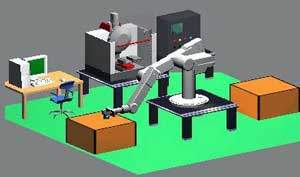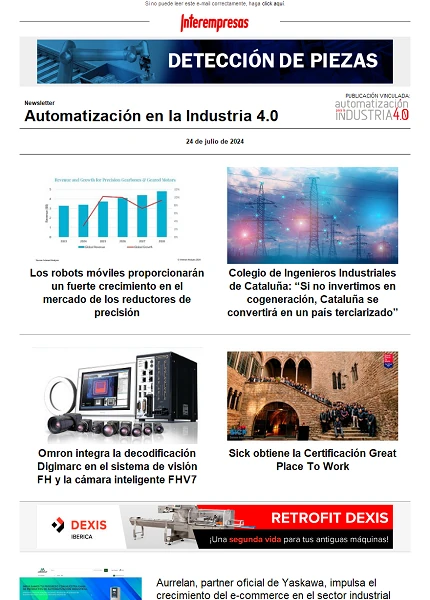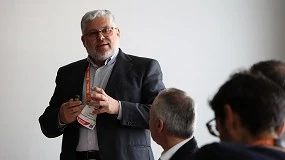Educational applications of Virtual reality in engineering manufacture
(1) Dept. of engineering construction and manufacturing. ETS Ingenieros Industriales of the UNED
Apart from postal 60.149. 28080 Madrid
TFN.: 91. 398.82.26 e-mail: erubio@ind.uned.es
(2) Dept. of materials and aerospace production. ETS aeronautical engineers of the UPM
01/12/20021. Introduction
The stage of practical training tends to be associated a number of specific difficulties relating, primarily, with the costs of the acquisition and maintenance of the equipment and the handling of them.
The Virtual reality presents itself as one of the best means currently available to partly alleviate these problems.
For this reason, the present paper has developed a methodology that allows the creation of generic Virtual reality applications.
This methodology has been particularized in the case of above mentioned manufacturing processes. In particular a Virtual Flexible manufacturing cell has been created as the one shown in Figure 1.
2 Developments
The first is a passive virtual environment that allows to observe cell in operation, while the second is an active virtual environment in which, moreover, will be able to manipulate its main components as if they were real objects. The software used in performing the work, Virtools Dev 2.0, is a suite of development where the programming can be joining pre-programmed building blocks on which it counts among its resources.
3 Findings
The preparation of this work has made possible, in addition, lay the groundwork for the creation of virtual laboratories complex and open new horizons in the realization of practical classes.

4. References
[2] Sanz Lobera, in.; Rubio Alvir, E.M.; Sebastián Pérez, M.A. (2001). Application of Virtual reality techniques in the use of machine tool of numerical Control. Proceedings of the 5th International Congress of mechanical engineering. Mérida (Venezuela).
[3] Mc Carthy, C.; Callede, D. (2001). Virtools Dev User Guide. Virtools. Paris.








